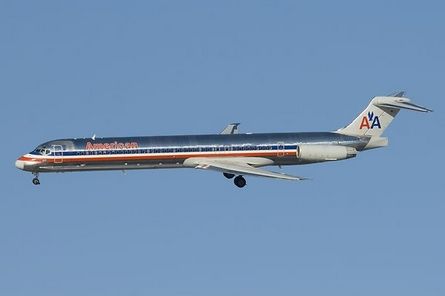Unprecedented fuel prices have created a crisis of historic proportions for the struggling US air transport industry, forcing legacy carriers to pull down hundreds of mainline aircraft - largely aged narrowbodies - and initiate thousands of layoffs in a fight to stay alive.
The financial crisis, being described by some as the industry's worst since the 11 September 2001 terrorist attacks, has yet to fully play out. But it could result in as much as a 20% reduction in domestic capacity by US legacies over the next year, predicts Richard Aboulafia, vice-president analysis at Teal Group. "This is not a strategic decision. It's a survival decision."
Any aircraft powered by Pratt & Whitney JT8D engines are "on borrowed time", he says, in reference to McDonnell Douglas DC-9s and Boeing MD-80s. Also at risk in the US fleet are early Airbus A320s, Boeing 737 Classics and older 757s, of which "there are quite a few that are 20-plus years" in age, as well as 50-seat regional jets.
 |
|---|
For months, US carriers have been scaling back their growth plans to offset steadily rising fuel costs. But American Airlines set the trend for large-scale fleet cuts in late May when it announced plans to slash up to 45 mainline aircraft, mostly MD-80s, in addition to significant regional aircraft lift, to support a consolidated system-wide reduction in available seat kilometre growth of 7-8% during the fourth quarter.
The movement picked up momentum last week when United Airlines earmarked its entire fleet of 94 737s - 64 737-300s and 30 737-500s - and six Boeing 747s for removal, providing it can work out terms with certain lessors. Continental Airlines subsequently announced it will pull down 67 737s, also a mixture of -300s and -500s, starting in September.
For United, the cuts mean that mainline domestic capacity will be reduced between 17% and 18% and cumulative consolidated capacity between 9% and 10% over the 2008 and 2009 period. Schedule changes will be principally accommodated through "modest reductions of underperforming markets" and through "frequency reductions", says United, which vows to retain a commitment to all five US hubs.
While the steps being taken by United stop "well short of the forecasted 20% cut necessary to produce profits", its revised capacity "is expected to diminish cash burn, narrow forecasted losses, and may prove beneficial to United's capital raising efforts", say JPMorgan analysts.
At Continental, delivery of new 737NGs will continue. Even so, after taking into account both the accelerated retirements and scheduled deliveries, Continental's fleet count will shrink to 356 aircraft in September 2008 and 344 aircraft at the end of 2009.
Such efforts are in addition to other, less-substantial cuts announced by legacy carriers. Northwest Airlines, for example, will remove up to 20 aircraft from service in September, including a further 10 aircraft from its dwindling DC-9 fleet. But the carrier is already reviewing that plan to see if further changes are necessary. "With fuel at these prices every airline, including Northwest, needs to examine whether it has the right level of capacity in the market," says the carrier's vice-president for corporate communications Tammy Lee.
While some aircraft being removed from the US fleet are expected to be permanently parked, many will be quickly placed elsewhere. "The DC-9s - they are gone and probably at least half the MD-80s," says Aboulafia. But "the good news", he says, is that 150-seaters "can be remarketed" as there is "still a global market for these aircraft".
Source: Flight International























